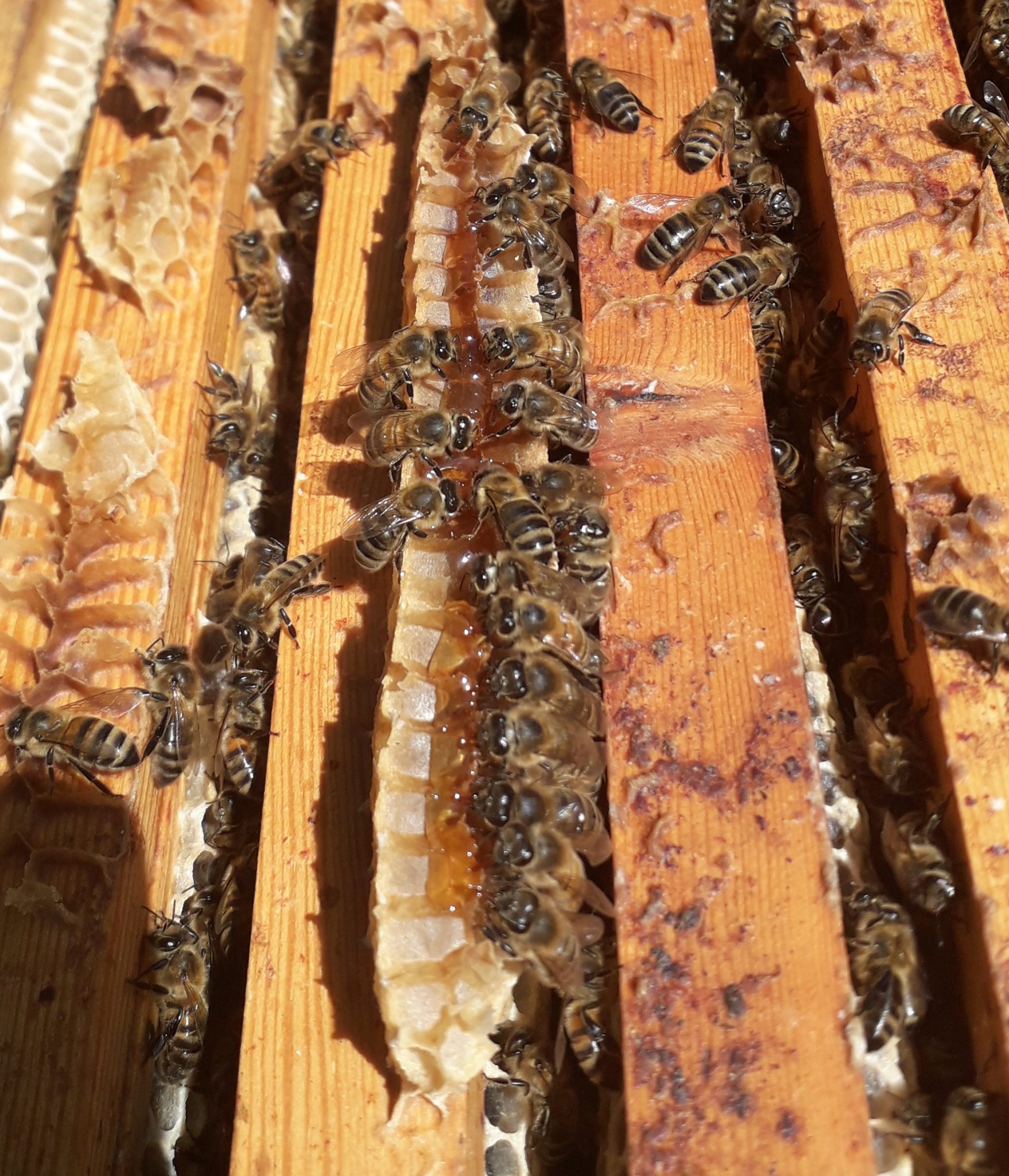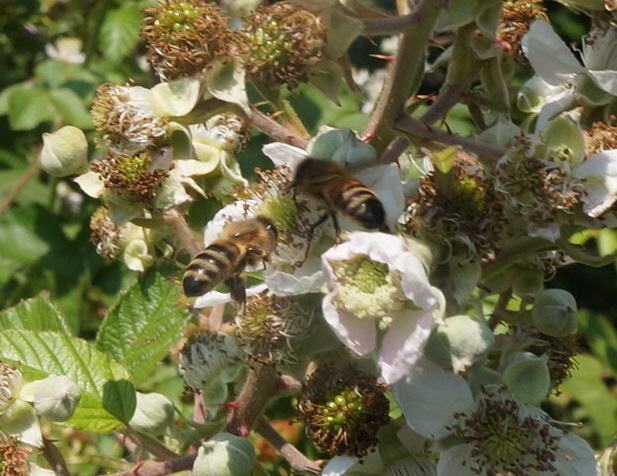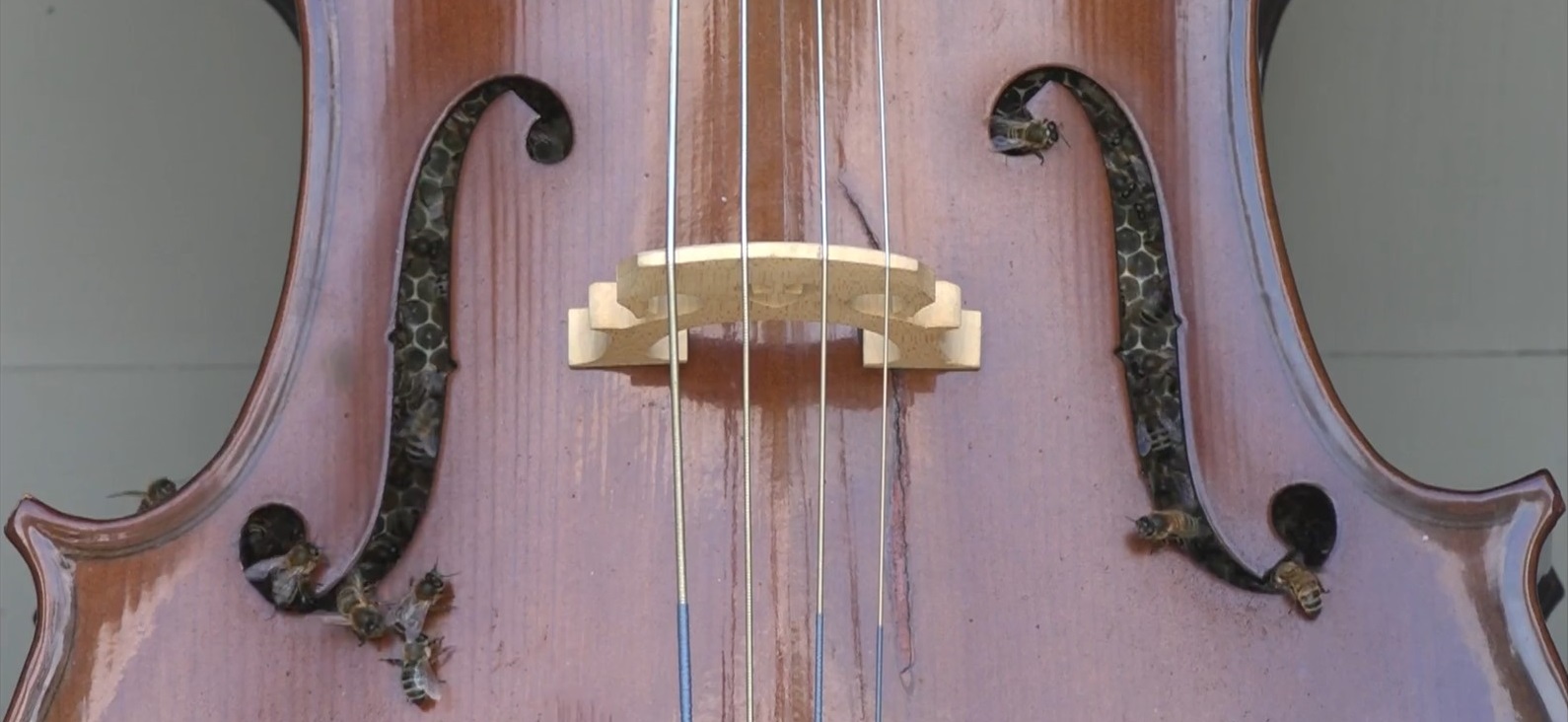- Wednesday, June 04, 2025
- Stay Connected
 Abraham Lincoln
If given the truth, the people can be depended upon to meet any national crisis...
Abraham Lincoln
If given the truth, the people can be depended upon to meet any national crisis...
 Guildford news...
for Guildford people, brought to you by Guildford reporters - Guildford's own news service
Guildford news...
for Guildford people, brought to you by Guildford reporters - Guildford's own news service
Beekeeper’s Notes: Bees Hit The Headlines With Singing Queens
Published on: 1 Jul, 2020
Updated on: 30 Jun, 2020
Hugh Coakley keeps bees in Worplesdon
Bees were hitting the headlines in the past month with news that emerging queens were tooting and quacking to communicate with the worker bees.
Queens still in their cells will make quacking sounds to announce to the workers that they are ready to hatch out. If there is more than one queen cell, which is often the case, the first new virgin queen to emerge will toot, a high pitched piping sound, as she walks around in the hive.
This is the signal for the workers to keep the other queens captive until she takes off with a swarm. Or, I assume because it was not said in the article, before they kill the redundant queens if they decide the first queen will stay.
Once I heard a queen piping and it was thrilling. I can see why the headlines were interested in the amazing phenomenon of queens tooting and quacking.
That wasn’t the purpose of the research though. It was to see if they could accurately predict swarming by analysing sounds and vibrations within the hive and it seems they were successful. In 15 out of 18 cases, they were were able to say that there would be a swarm, roughly an 85% success rate and in some cases, up to 30 days in advance.
One of the difficulties of beekeeping is to prevent or manage swarms. It means regular inspections which can be disruptive to a hive. If a simple method of swarm prediction could be devised, it would make it a lot easier for the beekeeper and the neighbours as well.
The researcher, Dr Martin Bencsik, from Nottingham Trent University, in a previous experiment encouraged a colony of bees to set up in a cello to study the vibrations and sounds they would make. There is a beautiful video of the bees coming in and out of the instrument.
He obviously loves the bees. He points out one of the wonders of the hive, the co-operative nature of the super-organism. “All decisions are group decisions. It’s the worker bees that decide if they want a new queen or not.”



















Recent Comments